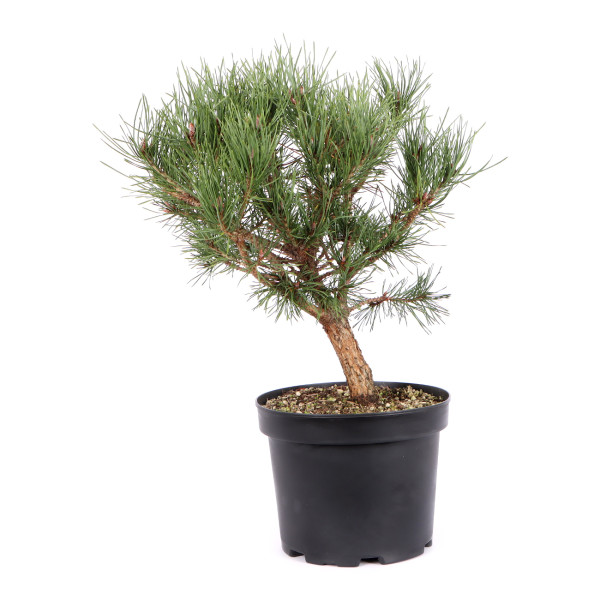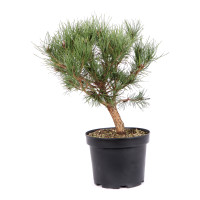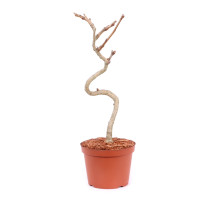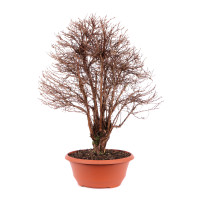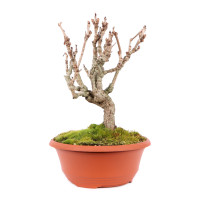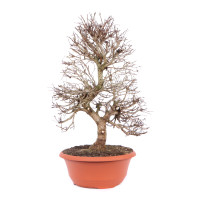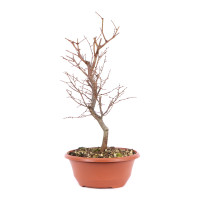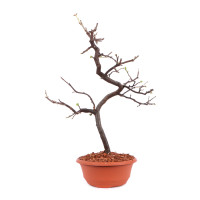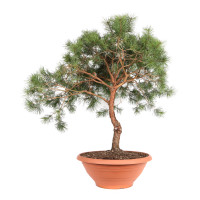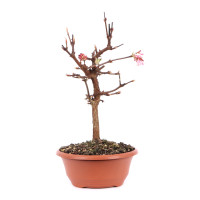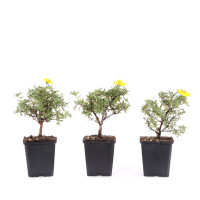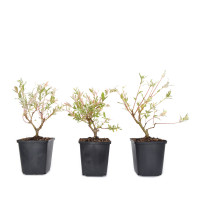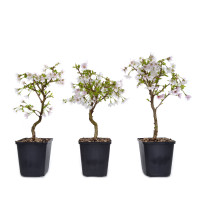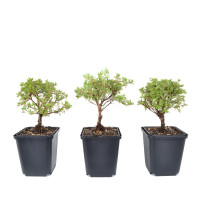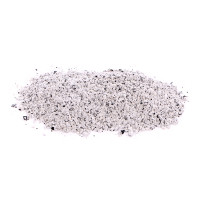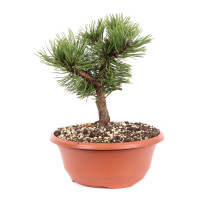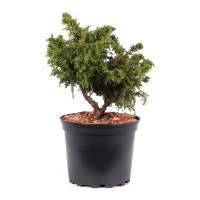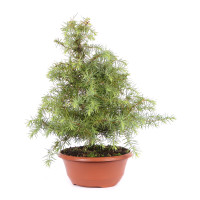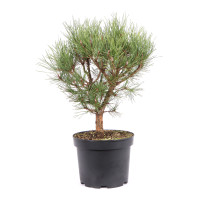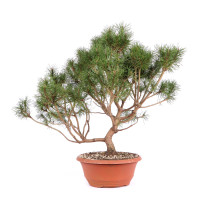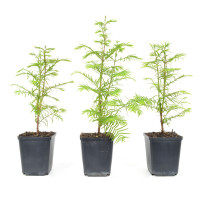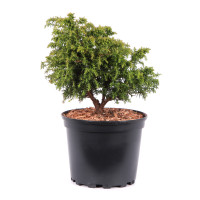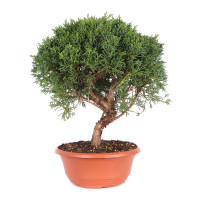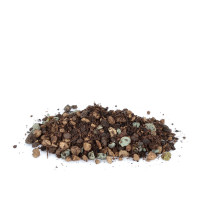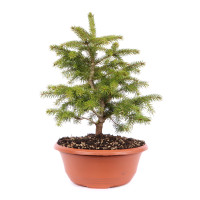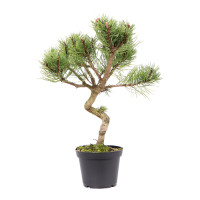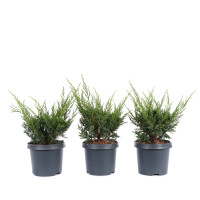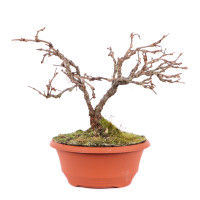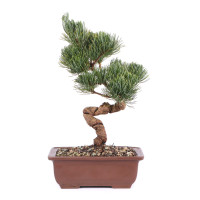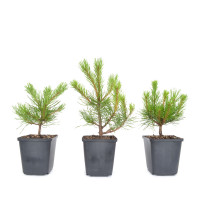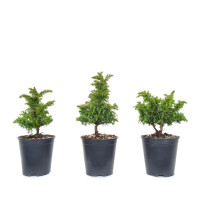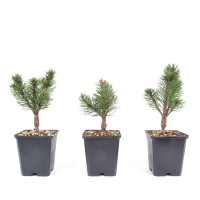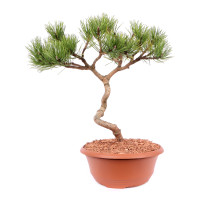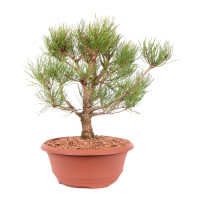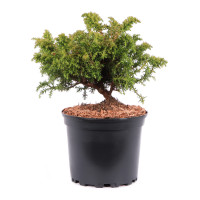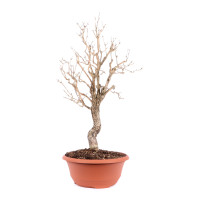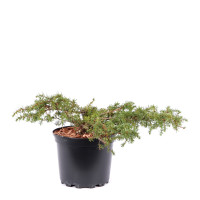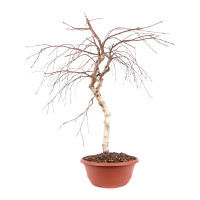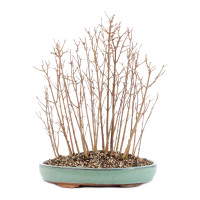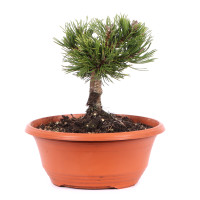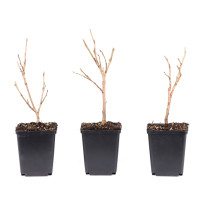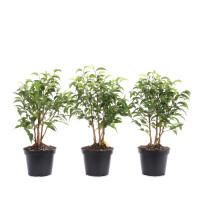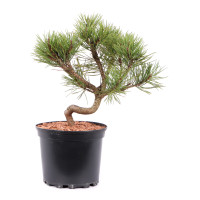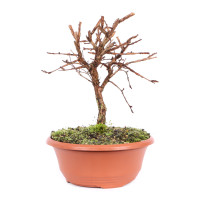- Order number: 1790-J-24-3784
- Height: 35 cm (no pot)
- Foliage: evergreen
- Bonsai Pot: plastic pot
- Year: 2022
- Origin: Germany
Pinus sylvestris ‘Watereri‘– Scots Pine 'Watereri'
General:
The Scots pine (Pinus sylvestris) is native to Europe and can be found in all locations due to its modesty. It grows in the lowlands, on dunes, in moors and in the mountains. However, it only forms forests in extreme locations where other tree species encounter difficulties. Scots pine reach a height of up to 40 meters and initially develop a conical and later a flattened, multi-shaped crown. The needles are blue to gray-green and two on the shoots. The bark is fox-red when young and in the crown area of older trees and dissolves in thin leaves.
Care as a bonsai:
The Scots pine is particularly suitable for bonsai culture due to its modesty and robustness. It is cut compatible and offers many design options. As a bonsai it exudes a lot of power due to its tough character. On the other hand, the designed pine shows little change compared to deciduous trees and thus gives the viewer a lot of calm over the course of the year. A designed pine is basically very easy to care for. The new shoots (candles) are shortened or broken with the fingers in May and branches that are too dense are thinned out in late summer. In summer, a sunny location is very beneficial. Pine trees shouldn't be kept too wet. During long periods of rain, it is even advisable to put the plant under a roof. You can wire and design all year round. However, this should not coincide with the repotting at the beginning of September. In addition, the plant must ideally be frost-free after the design. A structurally stable, airy mixture is used for the substrate and attention is paid to the presence of mycorrhizal fungi. You can recognize the fungus by an even, fine and white coating that envelops the roots and, ideally, runs through the whole earth. Pine trees are very hardy. Even so, they should be protected from dry winds in winter.
Special features of the variety:
The ‘Watereri‘ variety grows naturally in the form of a shrub and is only 5 meters high. Due to the compact growth and the stronger shoot formation, it is particularly suitable for bonsai design.

